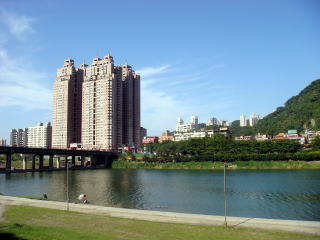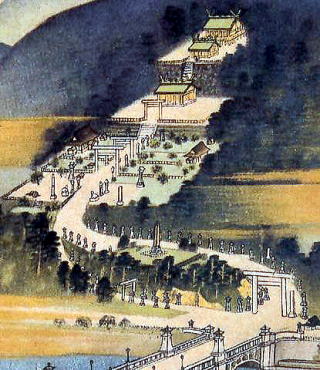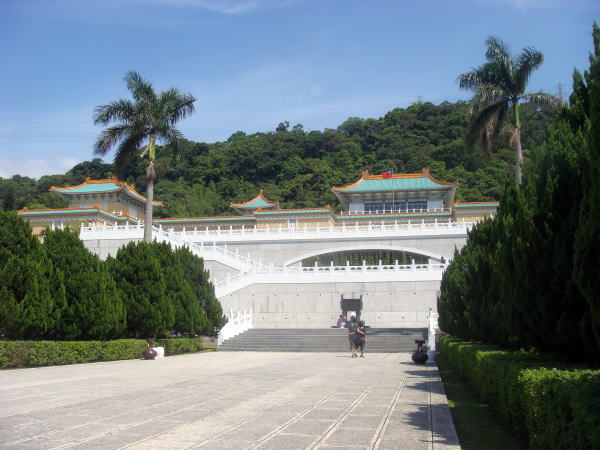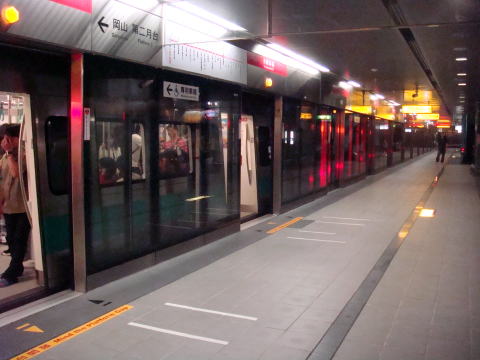Taiwan has initiated a New Era of Prosperity

台湾台北・中華文化の再構築
Taiwan has initiated a New Era of Prosperity  台湾台北・中華文化の再構築 |
Metropolitan Taipei Area: Present and Past
In 1895 the island of Taiwan was ceded to Japan after the first Sino-Japanese War. Taiwan produced
rice and sugar to be exported to Japan and also served as a base for the Japanese colonial expansion
into Southeast Asia and the Pacific area during the World War II. Japanese imperial education was
implemented in Taiwan. Many Taiwan residents also fought for Japan during the war. In 1949, after
losing control of mainland China following the Chinese civil war, 'Republic of China' government withdrew
to Taiwan and Chiang Kai-shek declared martial law. Japan formally renounced all territorial rights to
Taiwan in 1952 in the San Francisco Peace Treaty. For the next forty years, the Kuomintang of China
ruled Taiwan as the single party state.
台北市は中華民国の直轄市で、人口261万人(2009年4月現在)で台湾最大の都市である。現在、中華民国の
首都として政治経済教育の中心的な役割を果たしている。
MRTを利用して台北の街を見て歩いて痛切に実感したことは、台北の市街地は驚くほど豊かな自然に囲まれた
恵まれた環境にあることだ。MRTの北の終点、淡水駅近くの高層コンドミヌアムには小高い山が迫り、東シナ海
に流れ込む淡水河に沿って住宅地が広がる。豊かな温泉水の流れる渓谷には古くから知られている北投温泉がある。
MRTの南の終点、新店駅の傍らには深山の風情に満ちた川の流れがあり、吊り橋から見た茶屋は中国の掛け軸
から抜け出して来たような風情を醸し出している。
Bitan, the place of old and the new. Photographed near Xindian station.
MRT新店駅前吊り橋から見た碧潭

(L) High-raised condominium stands beside of the Xindian River.
(R) Danshui is located near the outlet of the Danshui River into Taiwan Strait. Fishing boats in front.
(左)Xindian MRT新店駅近くの高層コンドミニアム
(右)Danshui MRT淡水駅近くの淡水河風景(東シナ海に注ぐ)
しかし、こうした風景の広がる台北市内には、余剰空間が不足し始めており、経済活動の活発化は都市を周辺
部にまで拡大して来ている。基隆や桃園を含む台北都市圏の地域には人口が密集し、今や台北大都市圏の人口
は676万人を数え、 香港と同規模の都市圏にまで成長している。
A high-point view of the crowded city from the Taipei 101
台北は日本統治時代は「タイホク」と読んでいた。今でもNHK放送では「タイホク」と呼ぶ。普及している
北京語の発音では「タイペイ」である。台湾の歴史は波乱に富んでいる。16世紀初頭、最初に上陸したのは
ポルトガル人だが、やがてオランダの統治下に入る。その後清朝の支配を受けるが、1894年に清朝が日本と
戦った日清戦争で清朝は日本に敗北した為、翌年、1895年に台湾は清朝から日本に割譲された。日本統治
時代の始まりである。

(L)Hot Spring Vally, Beitou hot spring (R) Jian Cha Yuan
(左)北投温泉入口、地熱谷と表示) 1992年に中華民国が設置
(右)監察院(中華民国最高の監察機関)日本統治時代に建立
日本は本土から遠い台南を嫌って台北に総督府を設置、台北の本格的発展はこの時点から始まった。日本は清朝が
築いた市街の城壁を撤去、街路を建設し、また上下水道を整備するなど近代都市建設を進めた。1901年に台風
被害があり、在来建造物が壊滅的被害を受けると、それを期に中国式建築を一掃し、代わりにレンガ造り・石造りで
三階建ての官庁、学校、銀行、会社などを建設した。 周辺農地の治水・開墾が進められ、日本本土からの移住者も
多数にのぼった。台北郊外の北投 温泉は有数の温泉地として整備され、台湾の内外から多くの湯治客、観光客を
集め、1923年には昭和天皇も来訪した。このように日本統治下において台北は台湾の政治・経済・観光・軍事の
中心地として栄えた。台湾人の就学率は1904年には3.8%であったが、1944年には71.3%まで上昇し世界的に
見ても高い就学率を実現した。
台湾神宮は台湾の総鎮守として台湾で最も重要な神社とされていた。しかし、1944年に台湾神宮のある圓山の
山頂に旅客機が墜落し、新社殿や鳥居などは焼失した。

Taiwan Grand Shrine. The imperial seal is visible in the right dedicatory lantern.
Grand Hotel Taipei
The Taiwan Grand Shrine was built as Taiwan Shrine in 1901, atop Jiantan Mountain.It was most important
Shinto shrine in Taiwan. In the October 1944, a passenger transport plane lost control and crashed atop
the mountain where the Grand Shrine was located.This accident resulted in fires destroyed the important
structures. In August 1945 the world war 2 ended, and The Grand Hotel Taipei was built in the May of 1952
on the original site of the Shrine.

(L) National Palace Museum completed a major renovation in 2002 (R) National Chiang Kai-shek Memorial Hall founded in 1980
(左)(故宮博物館) 1948年に所蔵開始、2007年に全館を公開
(右)(中正記念堂) 1980年に中華民国が設置
第2次太平洋戦争中、米空軍による爆撃は、台北市内の総督府を始め多くの政府関連建物を破壊し、数万人の市民の
死傷者を出した。非常に痛ましい出来事であった。大戦の終結した1945年以降、日本人は本土に引き上げ、代わりに
蒋介石が率いる国民党軍が駐留、国民党は中華文化を復活する政策をとり、 台北の日本建築は中華式のものに建て
替えられた。
台湾神宮跡地には圓山大飯店が建造され、中正記念堂、 故宮博物館などと共に中国式記念建造物として新しい時代の
象徴ともなった。日本名の町や通りも、中山路、民族路などの中華式のものに改められた。 その後、台湾経済は
飛躍的に発展し、中心地である台北市でも人口増が起こったが、公共投資は後回しにされていたため、台北の交通
渋滞や公害問題は深刻化した。
1990年に入ると台北駅の地下化、 地下鉄建設、排ガス規制などが実行され、その後、台北の都市環境は飛躍的に
整備された。2007年に開業した台湾高速鉄道は新しい時代の象徴として、また2009年に実施した公共的空間の
全面禁煙規制は先進的な国として、台湾の国際的評価を更に高めて行くことは万人の認める所である。

(L) Kaohsiung MRT station platform (R) Taiwan high speed train leaving the Taichung station.
Taiwan 2009
Smoke-free Taiwan Yaoyuan Airport
Taiwan High Speed Rail
Taiwan Railway
Welfare and security support by Taipei MRT
Taipei along MRT line (Hot Spring Valley, National Palace Museum )
Taipei long MRT line ( Long Shan Temple )
Taipei along MRT line ( Taipei 101 Building )
Taipei along MRT line ( Grand Hotel Taipei, Chiang Kai-shek Memorial Hall,NationalTaiwanUniversity )
Kaohsiung MRT, Kaohsiung Airport
Kaohsiung City
Smoke-free public transportation
No smoking guest room in Taiwan
Smoke-free restaurant and bar in Taiwan
Smoke-free Hospital
A new era in a chinese culture and life in the island of Taiwan.
台湾桃園国際空港喫煙室を全廃
台湾高速鐵道(高鐵)
台湾鐵路(台鐵)
福祉、安全性重視のMRT
台北MRT沿線案内(北投温泉、故宮博物院、士林夜市)
台北MRT沿線案内(龍山寺)
台北MRT沿線案内(台北101)
台北MRT沿線案内(圓山大飯店、中正記念堂、台湾大学)
高雄MRT、空港
高雄市内案内
公共交通機関は全面禁煙
台湾のホテルは喫煙客室を全廃
台湾の飲食店は全面禁煙
台北の病院は全面禁煙
台湾・中華文化の再構築
台湾の歴史
Taiwan 2016
Railway trip in Taiwan 2016
Jiufen
Sun Moon Lake Hotel
Taipei Grand Hotel
Taipei Grand Hyatt Hotel
Taipei city tour 2016
Japanese influence on culture of Taiwan
台湾台北・中華文化の再構築
執筆 医学博士 宮本順伯
★This Web site is link-free.
This information was provided by the Smokefree Hotel and Travel.
The photographs were taken and the article was written in May 2009,
by Junhaku Miyamoto, M.D., PhD.
The article and photograph are added in July 2020.
Copyright (C) 2009 Junhaku Miyamoto, PhD. All right is reserved.
台湾桃園国際機場  Departure from Taiwan Yaoyuan International Airport |
Smoke-free Hotel and Travel
世界の鉄道レンタカー航空旅行ホテル喫煙規制情報サイト
Restaurant hotel railway rent-a-car travel airport condominium smoking
ban
![]()
![]() Twitter@worldviewtokyo
Twitter@worldviewtokyo ![]() Twitter@smokefreejpn
Twitter@smokefreejpn ![]() Twitter@criticismjpn
Twitter@criticismjpn